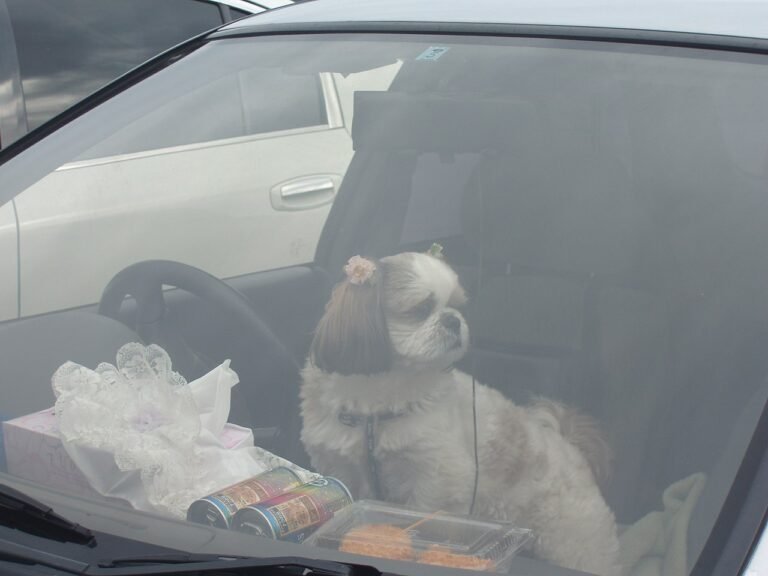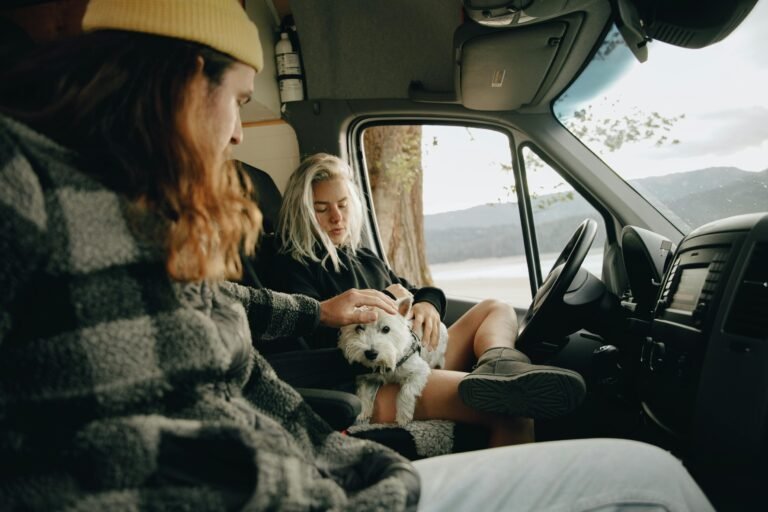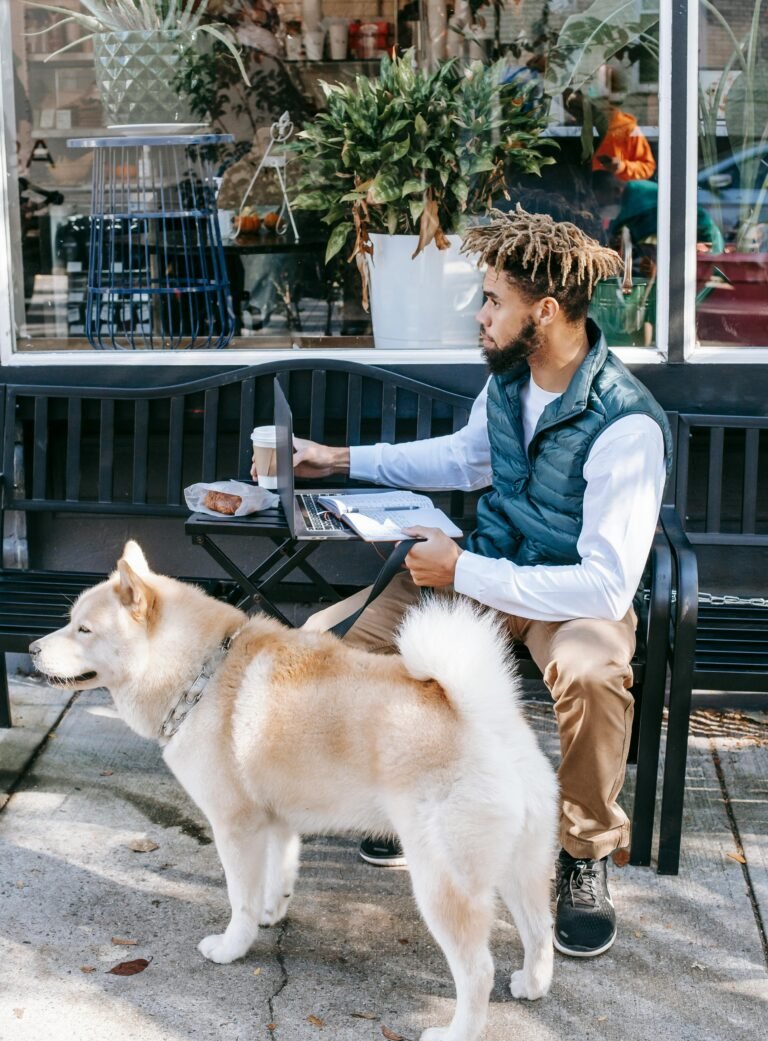Introduction
Camping with your dog is one of the best ways to disconnect from screens, reconnect with nature, and strengthen your bond. Whether it’s a quiet weekend under the stars or a weeklong wilderness trek, bringing your pup along turns any campsite into an adventure. But nature can be unpredictable—and preparation is key. Here’s your complete guide to camping safely, comfortably, and responsibly with your four-legged explorer.
Why Go Camping with Your Dog?
Dogs are born adventurers. The scents, sights, and sounds of the outdoors ignite their curiosity and joy. For owners, sharing that freedom builds lasting memories and trust. Camping also lets your dog burn energy naturally and enjoy life beyond city sidewalks. It’s not just a trip—it’s a shared reset for both of you.
- Fresh air & exercise: Hiking and exploring keep your dog physically fit.
- Bonding time: No distractions—just you, your pup, and nature.
- Relaxation: A slower pace helps both of you unwind and recharge.
- Adventure: Dogs love discovering new trails, lakes, and smells.
1. Choose the Right Campsite
Not all campgrounds allow pets, so always confirm before you go. Look for places labeled dog-friendly or with accessible trails and water sources. Consider these tips:
- Check leash rules—some parks require leashes under six feet.
- Avoid crowded campgrounds if your dog is reactive or easily overstimulated.
- Choose shaded sites to keep your pup cool in summer.
- Be mindful of wildlife—avoid camping near dense brush or animal burrows.
2. Prepare Your Dog Before the Trip
A successful camping trip starts at home. Gradually acclimate your dog to outdoor sounds, tents, and long walks. Practice basic obedience—sit, stay, come—since recall is vital in open spaces. If your dog isn’t used to sleeping outdoors, do a trial run in your backyard first.
Before leaving, ensure your dog’s vaccinations, flea, and tick preventives are up to date. Pack a copy of their health records and ID tags with your cell number just in case.
3. Pack Smart: Dog Camping Checklist
Here’s what to pack to keep your dog safe and comfortable:
- 🦴 Food and water (plus collapsible bowls)
- 🛏️ Sleeping pad or blanket
- ⛓️ Leash, harness, and stake or tie-out cable
- 🐕 Waste bags and scoop
- 🧴 Flea/tick repellent
- 🚑 Pet first-aid kit (include tweezers for ticks)
- 🏕️ Towels for drying after swims or rain
- 💡 Flashlight or LED collar for nighttime visibility
- 🥾 Booties for rough or hot terrain
Organization matters—keep a dedicated “dog bag” so you can find everything quickly when you arrive or during an emergency.
4. Set Up a Safe Campsite
Once you arrive, let your dog sniff around and adjust. Then set boundaries for safety:
- Use a tie-out line or portable pen to give freedom while staying secure.
- Keep food sealed to prevent wildlife encounters.
- Set up their bed near your tent door—they’ll feel protected and can alert you to activity outside.
- At night, zip your dog inside the tent to prevent wandering or wildlife contact.
5. Keep Hydration and Nutrition Steady
Outdoor adventures burn more calories. Bring extra food portions for long hikes or cooler weather. Avoid giving lake or stream water directly—carry filtered water or use purification tablets. Offer small sips often, especially on hot days or steep trails.
6. Mind the Weather
Hot weather: Camp near shade or water sources and plan hikes during cooler hours. Use cooling mats or wet bandanas around your dog’s neck.
Cold weather: Bring an insulated jacket or sleeping bag for your pup. Avoid damp bedding and check paws for frost or ice buildup after walks.
7. Respect Nature and Other Campers
- Always pick up waste—burying it isn’t enough.
- Keep barking under control; wildlife and campers appreciate quiet.
- Stay on designated trails to protect fragile habitats.
- Follow the Leave No Trace principle—leave campsites as pristine as you found them.
8. Safety Around Wildlife
Curious dogs can accidentally provoke wild animals. Stay alert and:
- Keep your dog leashed during hikes and near camp.
- Avoid food scraps—these attract raccoons, bears, or coyotes.
- Use a lighted collar at night to spot your dog easily.
- Learn which local plants and mushrooms are toxic.
9. Nighttime Comfort and Security
After sunset, campsites can feel unfamiliar. Reassure your dog with routine—quiet play or brushing before bedtime helps them settle. Keep a lantern or headlamp nearby in case of midnight potty breaks. Some dogs like a small chew toy to relax while you wind down by the campfire.
10. First-Aid and Emergency Prep
Even well-planned trips can bring surprises. Include these basics in your dog’s first-aid kit:
- Antiseptic spray or wipes
- Gauze and adhesive wrap
- Tweezers or tick key
- Hydrocortisone cream (for insect bites)
- Benadryl (ask vet for correct dosage)
- Booties or bandages for paw injuries
Before your trip, research the nearest emergency vet or 24-hour clinic near your destination and save the number offline.
11. Activities to Try While Camping
Make the most of your outdoor time with simple, enriching activities:
- Trail hikes or forest walks
- Swimming in dog-friendly lakes
- Agility courses built from fallen logs or rocks
- Campfire relaxation and stargazing together
These shared moments strengthen your bond and help your dog sleep soundly under the stars.
12. Pack Up Responsibly
When breaking camp, double-check for waste, leftover food, and toys. Brush off your dog to remove burrs or ticks before getting back in the car. Keep their routine calm—end the trip with a reward and water break so they associate camping with positive experiences.
Conclusion
Camping with your dog is more than a getaway—it’s a chance to reconnect with nature and each other. With thoughtful preparation, smart packing, and respect for the environment, you can turn any campsite into a comfortable home under the stars. The best adventures don’t require fancy gear—just open skies, a warm campfire, and the happy sigh of your dog curled up beside you.






